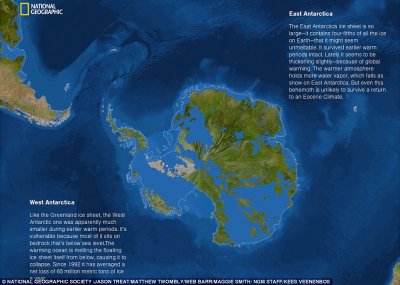blessmycottonsocks
Antediluvian
- Joined
- Dec 22, 2014
- Messages
- 9,433
- Location
- Wessex and Mercia
Apologies if there already is a thread somewhere for this fascinating topic.
I recently read up about the cartographer Philippe Buache (1700-1773), one of whose maps is centred on Antarctica and even shows the central channel between the land masses:
Comparing this with a recent Nat Geo image showing how Antactica would look without the ice shows significant similarities.
Whilst we've all heard of the (in)famous Piri Reis map, I believe this one seems more anomalous, given that, at the time, cartographers should not officially even have known about Antarctica's existence, let alone have made maps of how it would have looked in the very distant past.
Any views?
I recently read up about the cartographer Philippe Buache (1700-1773), one of whose maps is centred on Antarctica and even shows the central channel between the land masses:

Comparing this with a recent Nat Geo image showing how Antactica would look without the ice shows significant similarities.
Whilst we've all heard of the (in)famous Piri Reis map, I believe this one seems more anomalous, given that, at the time, cartographers should not officially even have known about Antarctica's existence, let alone have made maps of how it would have looked in the very distant past.
Any views?
Last edited by a moderator:





